The future belongs to those who believe in the beauty of their dreams.
(Eleanor Roosevelt)
Translation by Bee Jensen
There are many ways to identify with a place as I have written so many times. But I have always focused on what linked me to the Iglesiente area and the Sardinian community. One of these has always been the belonging to a culture that comes from an economy based on the mining industry that have touched directly or indirectly. In the area where I have always lived, the air itself breaths of mining. My father, back in 1948, ended up playing football in the Monteponi team (Monteponi mine), therefore the characters, the persons and the places I have embodied are intuitive and easy to identify with.
This mining industry as the ‘head of the community’ which until its death influenced not only the fate of the places but also the minds of the population, created an attachment that could not be broken and that for too long has imprisoned everyone. A mixture of bread, school, entertainment, where the employer provided services such as food, schools for children, summer camps for employees’ children and even the football stadium. With the total closure of all the mining companies, this is the background to understand that one day a whole community would suffer not only the lack of jobs but also that of ideas.
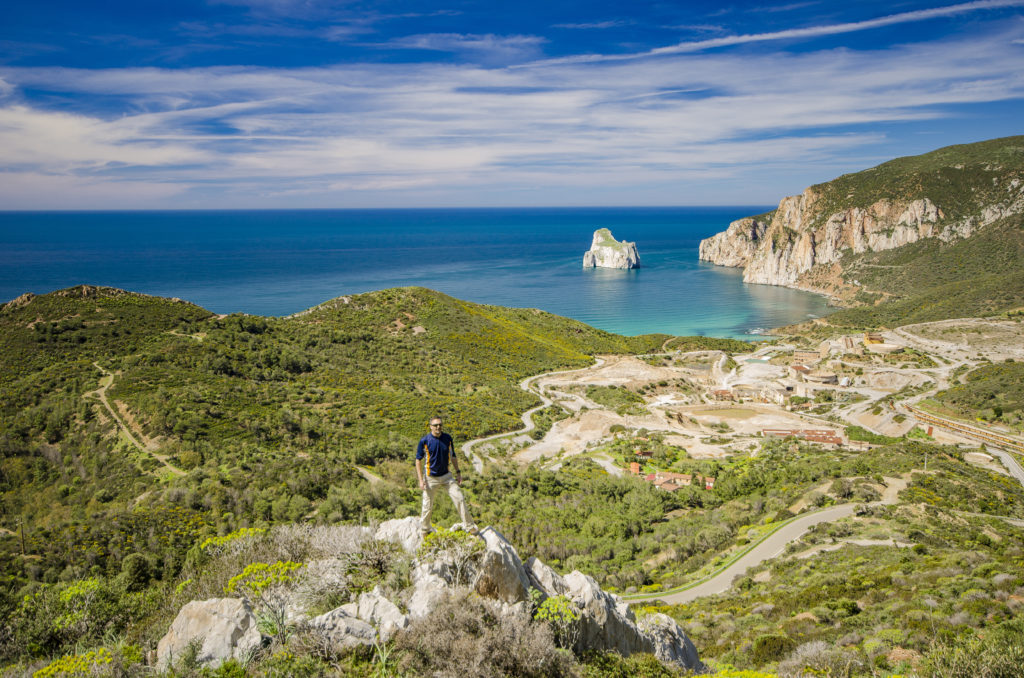
And the question arises: is this why we have reached such a serious employment crisis in Sulcis Iglesiente? History teaches us that even the hub of Portovesme, which is now also going through a dark period, was only a modest substitute for what we could call an industry. At the end of the seventies, when the definitive industrial crisis was clear, we began to hear about mining archeology. Still a vague concept, but by the intent of many, would have laid the foundations for an economic reconversion based on cultural tourism and history, taking advantage of what had been left by the mining companies. Many projects and many publications were released in those years and many, too many words thrown to the wind. Especially in the island’s political circles, but who were unable to follow up on ideas, even some really good ones from intellectuals and technicians from the world of mining.
But in the meantime, in this emptiness created with the closure of this large industry, the need to avail itself of the know-how of qualified personnel that dealt with the reclamation and the safety of the vast old mining areas that, for obvious reasons, were becoming very dangerous places. Here the Region of Sardinia worked hard to set up a company, IGEA S.p.A., born from the ashes of the old company S.I.M. (Italian Mining Company) which until now had managed all the mining sites on the island including the most famous ones like Porto Flavia and the Henry Tunnel. These were the first necessary steps to avoid that all the land of the former mines became the land of nobody, even if nothing had been done to give new life to a territory that could not live only on subsidies. But there was an important piece missing: who or what would have to oversee and coordinate a vast and complicated operation of valorisation of the many parts left by mining in Sardinia.
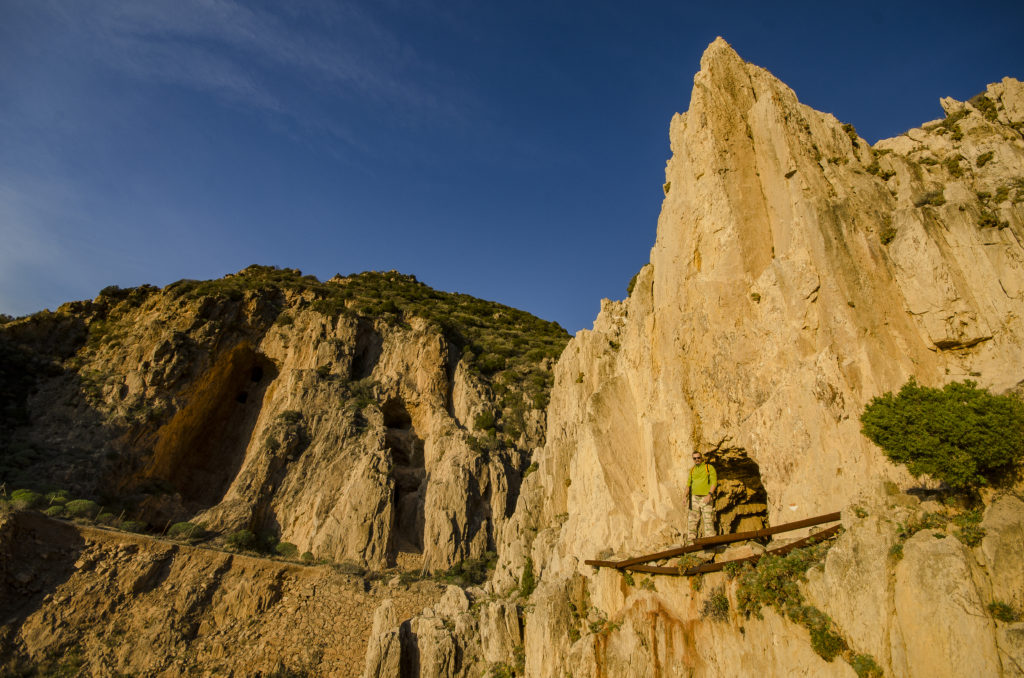
Someone theorised the birth of a park whose area was included between the mountains of Mount Linas and Marganai and, on this line, they started activating relations with UNESCO thinking about a “Man and Biosphere reserve”. An institution that was to promote, scientific and interdisciplinary research activity on the various ecosystems that over the years had clearly undergone drastic changes due to human activity. And it was not surprising that the Iglesiente was a favourable ground for the development of ideas like this: The mining activity had shaped and cultured both the land and the marine environment here. But it was understood that the protection of biodiversity was not enough, precisely because of the anthropological, geological and industrial specificities present here, a larger project had to be proposed for these places. The foundations were then laid for a Parco Geominerario in Sardinia with the establishment of a promoter committee in 1991 and which, a few years later, saw its international value recognised by UNESCO in 1998.
Despite the important steps, the establishment of the Parco did not come to fruition. These were the days of the mobilisation and occupation of the Monteponi mine of the regional councillor Giampiero Pinna who made it more visibil. This issue was concluded some time later with the signing by Minister Matteoli of the decree establishing the “Parco Geominerario della Sardegna”. It was the beginning of an awareness so the precious “mine” of places, buildings and technology would not be lost forever.
Since then, much has been done, mostly with public funds, reconstructing sites and mining villages. But, more often than not, without following up on that work by initiating privatisation or at least a simple concession process, there has not been a real economic and social backlash necessary to give a strong signal of rebirth to the territory. And, by comparing the extraordinary mineral heritage already launched to the tourist market with the number of people who actually work today and take advantage of this economy, we realise that all this is not enough.
And it is certain that the aid can not be expected to fall from the sky. The vision we had at the end of the eighties was that this future of use of industrial sites for tourism should always come with public funding.
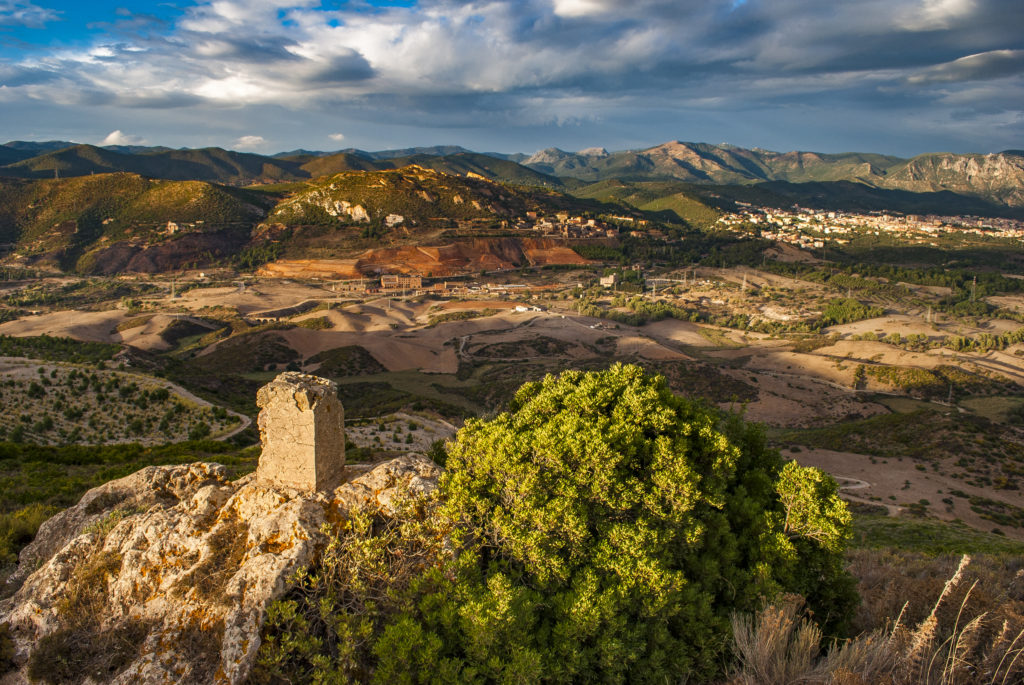
But it is from private efforts that we can start again. I meet him on the outskirts of Iglesias on a rainy day. Renato Tocco, a nurse by profession, with a passion for industrial archeology, decided a few years ago to buy a property to renovate. He comes across an ad on Ebay that read: “Ruin 100 square meters”. His surprise is great when he visits the place described in the advert and notices that, beyond the ruin, the area also contains the precious mining site of Pozzo Baccarini and a part of the historic and important Monteponi Portovesme railway network. I’m convinced anyone else would have turned on their heels and left, but his mind was already planning. He is searching for documents in the main archives and slowly reconstructs the history of that place. And not only: with the vision of a future focused on a tourism-based economy in mind, he begins to work on restoring the site.
His passion knows something fantastic because the attempt to reconstruct a small stretch of the railway line that, in former times transported mineral from the Monteponi mine to Spiaggia Le Cannelle (today Portovesme), is something that goes against the program of divestment implemented in recent decades, which has led to the dismantling of an entire heritage of the island’s industrial transport history. As Renato tells, the line was born from the need for fast, punctual and efficient transport for the material mined in the mines of the area. This was the first in Italy with what we today call narrow gauge. And, with a touch of irony but also admiration, it is said that those 950 mm, which then became the national rail standard, arose from an error by the Monteponi engineers who were building it. In fact, when the locomotives, the legendary Canada Works, arrived from England, an error was revealed. The wheel width was bigger than expected, but now nothing could stop this project so much wanted by the Monteponi Company and its chief designer Pellegrini. Remedying the width difference with the famous Italian ability to improvise and a little trick and the work started in 1871.
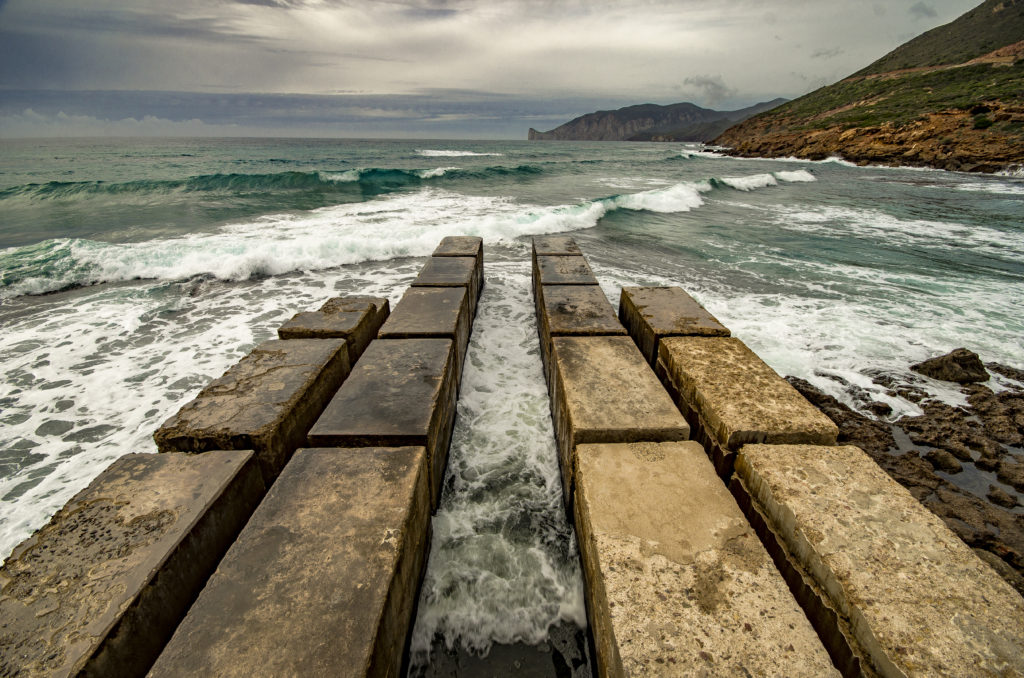
Walking through the site, Renato also introduces me to another important piece of this long industrial tale. We all know how important the mining area of the Iglesiente was as a source of supply of lead and zinc in Italy. However, the ‘harvest’ had always been influenced by significant water flows that prevented mining down under a certain depth.This problem occurred above all in the Monteponi mine, where the hydrostatic level denied stopped work under 70 meters above sea level. This has always been the natural subsurface water level and the water remained imprisoned in the subsoil in a sort of basin surrounded by rocks and impenetrable clay that prevented it from flowing towards the sea. After several attempts to bring down the water level below seventy meters by installing pumps in the extraction well Vittorio Emanuele, it was understood that it was necessary to resort to more powerful methods of draining than the previous ones. The construction of the new Pozzo Sella coincides with the moment of the greatest suffering for the mining company, as the thirty-year concession was expiring.
Even with two huge 500 hp pumps installed inside it, the desired results were not achieved. After desperate attempts to get the draining system to work, in six years the level had only lowered by 8 and a half meters. Too little to think about a rosy future for the mine. The turning point came when, thanks to a law from 1879, the State decided to sell the state-owned mine to the Monteponi Company. Engineer Ferraris, the then director of the company, thought of an old project that involved the digging of a drainage tunnel. It had to allow the fast and constant flow of water from the subsoil to the sea, only a few kilometers away. Despite the great difficulties encountered in the construction of this work, then titled “Umberto I” and costing a decade of work, the results allowed the hydrostatic level to 14m above sea level. This remained stable for at least thirty years, during which the mining industry took off in Iglesiente.
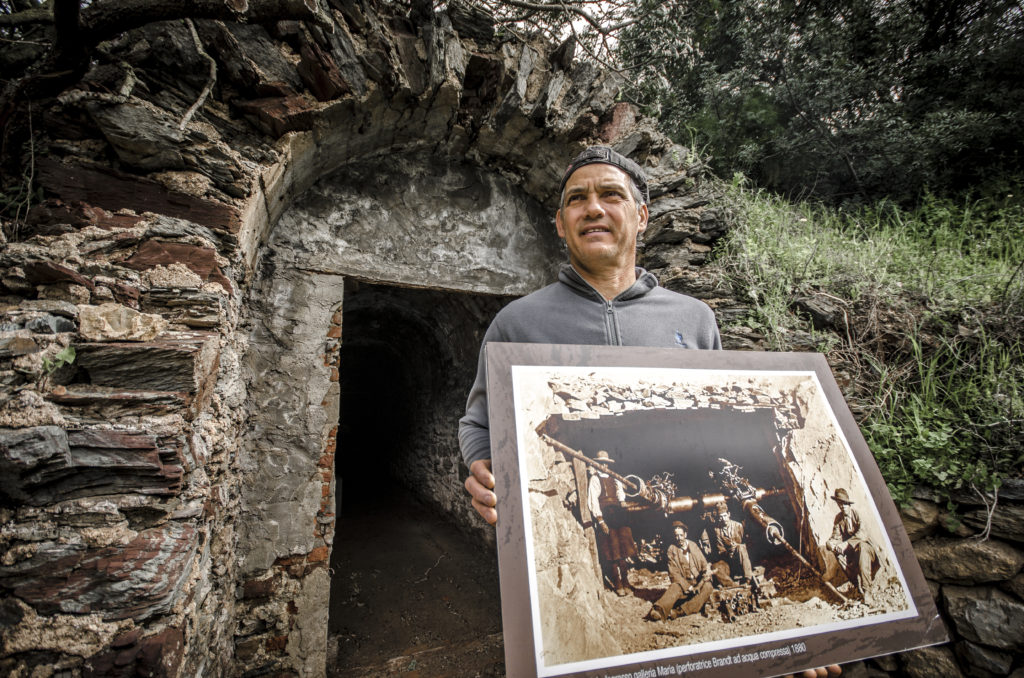
While I listen with amazement to the story of the “landowner”, I try to make him feel my interest in all the historical, technical and naturalistic details that he describes to me, but my interest is focused on one man’s passion and on the potential of his idea. A vision that I would have liked to have seen in certain parts of island politics, sometimes blindfolded just like the Moors depicted on the Sardinian flag. And far from the idea of creating something of this beautiful story that is being born with the few resources that Renato has available; I wonder if anyone has already noticed that this can be a precedence, an example for all those who, like me, believe that the economy of an area can start again without the usual pompous cut of ribbons with tricolour bands and catwalks for political figures. I believe that the future of this area can be formed with the small steps of an individual, but not with the slow action of public administration, so often absent or too intent on acting as guarantor of the res publica, immobilising it with prohibitions and paperwork.
And, as Renato confides to me, when you do not clash with the bureaucracy, in its most negative sense, the obstacles created by the usual idiots, those who do not want to see the future and are furious about those who strive to create something different other than the nothing that has happened in these last decades. In recent years the site of Pozzo Baccarini has undergone quite a few acts of vandalism. Terraces and a damaged pinnetto-style huts and even the theft of a wall. Yes, just a wall with all the stones with which it was built. And this shows that there is still a lot of work to be done, especially on the consciences of a part of the population that, in many cases, mistakenly sees in the neighbour’s work a limitation of their rights and freedoms. Despite all this, I am convinced that most of the people in this place, believe that people like Renato’s is the right way out of this crisis, which is not only economic but also cultural. And the most intriguing thing is that the anonymous ruin described in the advert on Ebay is becoming, as in a fairy tale, a demonstration that those simple ideas that years ago were only a dream are becoming a precious reality.